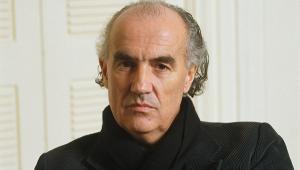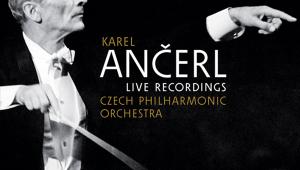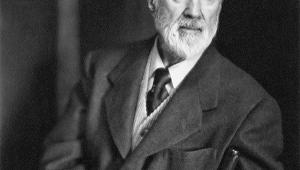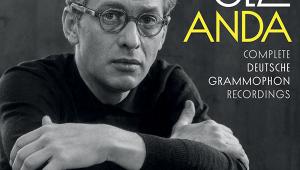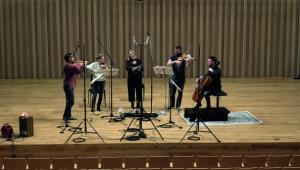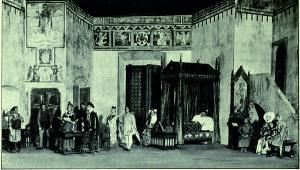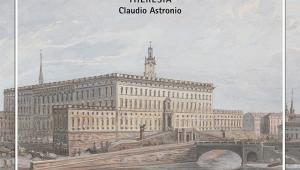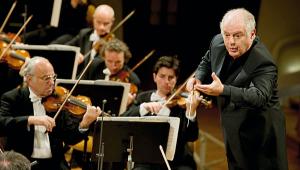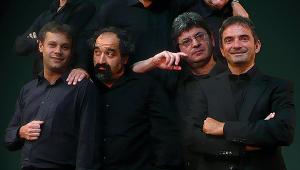Bohemian Christmas Music: Beyond Good King Wenceslas
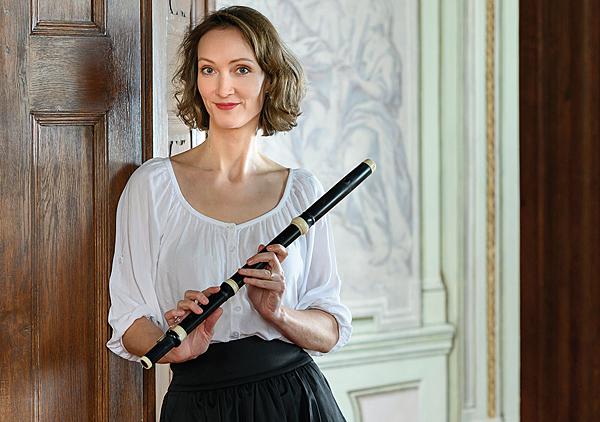
Precious few countries can boast a Christmas repertoire as rich and colourful as the Czech Republic. None of it, however, concerns the figure of Svatý Václav – St Wenceslas – who was posthumously ennobled from dukedom to kingship by the Holy Roman Emperor Otto I following his assassination in 935AD.
Cults of veneration quickly sprang up both in his homeland and in England, which may explain the durable affection enshrined in the Victorian carol – taking its tune from a springtime hymn from a 16th-century Finnish songbook, Piae Cantiones – praising the king's good works in bringing alms to a peasant on St Stephen's Day (26th Dec).
Family Man
The Czechs have plenty of their own carols – many of them featured in the 'Essential Recordings' boxout opposite – but the piece that has come to embody the spirit of a Czech Christmas is the work of a Bohemian schoolteacher, Jakub Jan Ryba (1765-1815). Unlike better-known forebears such as Biber and Zelenka, Ryba remained in his native country instead of migrating to foreign lands, while accumulating a prolific output of almost 1500 works, including 120 Masses.

A family man of deep faith and dedication to his vocation who introduced physical education into the school curriculum, he also picked fights with both church and state authorities, before his sudden death (probably by his own hand) at the age of 50.
The best-known of his Masses is subtitled 'Hail, Master' and is a Christmas Oratorio in all but name. This 'Christmas Mass', from 1796, is a fixture in the repertoire of Czech church musicians, both amateur and professional, thanks to its simplicity, joy and technical demands (nothing beyond the means of a decent parish set-up). Imagine a happy meeting of Haydn's Creation and Smetana's Bartered Bride.
The composer's own texts touch on the themes of the Mass while telling a Nativity story focused on the Shepherds' visit to the stable and the crib. In the opening Kyrie, the shepherds argue over the possible causes of the shining star above them. Angel voices announce the birth of Jesus in the Gloria, before the shepherds prepare for their journey to Bethlehem in the Graduale and Credo. The Offertory pays homage to the new-born child. The final Sanctus, Benedictus and Agnus Dei are celebratory songs of praise before the cradle, with the choir in the final passage praying for peace on Earth to men of goodwill.
Pastoral Harmonies
As befits its status, the Christmas Mass has enjoyed no shortage of recordings. The first of them to win international currency for Ryba's music was a mid-'60s Supraphon account led by Václav Smetáček [SU3658-2]: spirited but over-scaled and best remembered for Benno Blachut's tenor. The list of Essential Recordings could easily have been an all-Supraphon affair, but adventurous listeners will turn up plenty of alternatives on labels beyond Eastern Europe. In 1998 the presence on DG's artist roster of Magdalena Kožená prompted the label to make a new, period-instrument recording, badged as an album of 'Czech Christmas Music' which couples Ryba's Mass with several pastorellas; the drawback is that Kožená herself appears on only a handful of tracks, and the album is now download-only [477 8365].
Another beguiling Supraphon album [SU3191-2] reconstructs the sound of medieval liturgies to mark the feast in the Cathedral of St Vitus, chanted by the excellent Schola Gregoriana Pragensis, but the first individual figure of note in the history of Czech Christmas music is Adam Michna z Otradovic (c1600-1676). As a composer of lyrics as well as music, he wrote the first published collection of native Czech art songs, The Czech Lute (first published in 1653), but the bulk of his output was sacred.
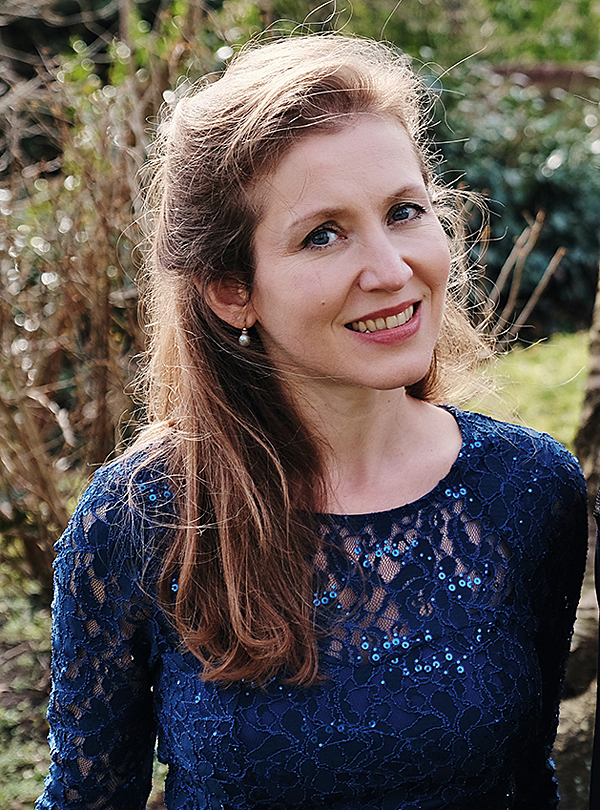
A 1993 Supraphon album led by Miroslav Kopp of 'Holy Year Music' by Michna z Otradovic begins with a touchingly simple Advent Chant, moving on to Christmas and Epiphany anthems (a lovely, triple-time up-tempo number for The Three Kings) and then Easter, climaxing in a robust, rustic piece of hymnody on the Resurrection.
The Naxos album of Ryba's Christmas Mass is significantly enhanced by its coupling, a Missa pastoralis bohemica which places jolly vernacular (Czech) inserts within a setting of the Latin Mass text. This practice draws on the genre of Christmas pastorellas – musical Nativity plays, often featuring folk instruments such as bagpipes, hurdy-gurdies and alphorns – which arose within central Europe during the second half of the 17th century.
Precious few have been recorded compared to the thousands that survive, but the 'Pastores surgite' album samples several of the best, by otherwise obscure names such as Hataš, Linek, Mašek and Brixi. 'Christmas in Prague Cathedral' is a more recent reconstruction from 2014, bringing to light the figure of Josef Antonín Sehling, the leading Kapellmeister in Prague contemporaneous with Bach's tenure in Leipzig. Sehling's Latin-texted motets draw on the purity (and the material) of Michna's hymns while sharing the pastoral-sublime world of Ryba's Mass.
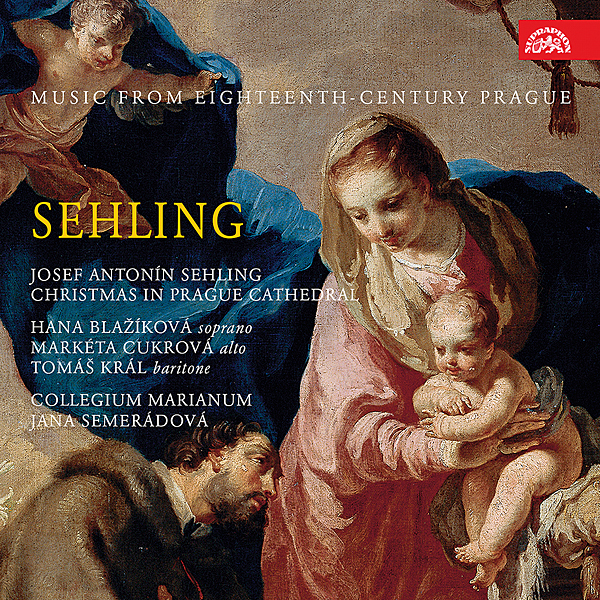
Czech composers also carried on the pastorella tradition even when they emigrated to pursue an international career: Biber transforms the intrinsic homeliness of the genre into a fantasia of violin showmanship in his A major Violin Sonata 'La Pastorella' (try Andrew Manze's harmonia mundi collection, HMG507344/45). Brixi also wrote a good deal of instrumental music with sacred performance in mind such as a series of Handelian organ concertos (again, native performers on Supraphon rule here: SU3741-2).
Another Winner
The pastorella itself evolved from its vocal, storytelling origins to embrace upbeat and festive pieces for harpsichord, organ and even wind ensemble. The Supraphon collection of 'Czech Pastoral Partitas' is another winner, worth pursuing on streaming services especially for the alphorn cadenza to launch the Allegro pastorella by Vaclav Havel 1788-1832 (though whether or not a forebear of the post-Communist Czech president isn't clear).
The prevailing mood of awe and delight in these pieces is updated by Ksenia Kouzmenko's well-chosen collection of Czech Christmas piano music. Jaroslav Kvapil depicts a noisy family at the dinner-table in a Ravel-like turmoil in his Vánoce (Christmas) cycle. A trilogy by Martinů takes in a sleigh-ride and a fireside lullaby, before Janáček's exquisite miniature Christ The Lord Is Born recaptures the bright-eyed wonder of a hymn by Michna z Otradovic.


